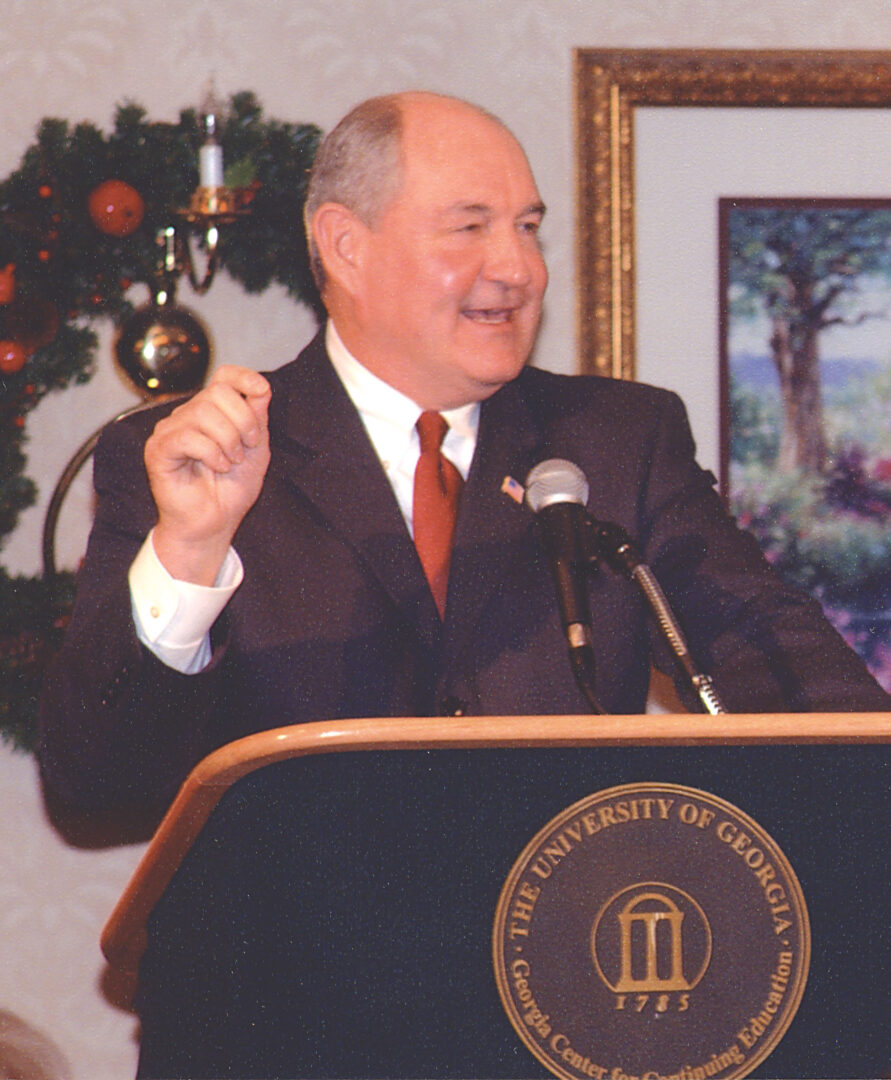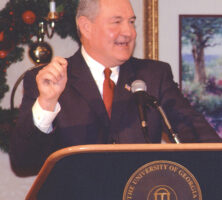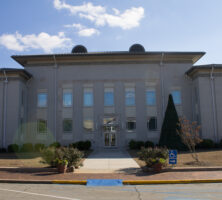Houston County, in central Georgia just south of Macon, was created on May 15, 1821, through a treaty with the Creek Indians.
Named for Governor John Houstoun, the spelling of the county later evolved to “Houston.” The pronunciation, however, remains to this day “howston.” Perry, the county seat, was incorporated in 1824. Warner Robins, the largest city, was incorporated in 1943, when a major military base was established nearby during World War II (1941-45). Centerville was incorporated in 1958.

Houston County was carved from the wilderness by an act of the state legislature as one of five huge counties. The geographic center of the county was given the name Wattsville, which was later changed to Perry. Land was lost to the formation of Bibb and Crawford in 1822, and later also to Pulaski, Macon, and Peach counties. Early settlers, mostly winners of the land lottery of 1821, came from the Georgia coast and from the Carolinas and Virginia to grow corn, wheat, potatoes, and garden vegetables in the rich sandy loam that makes up most of the county. Proximity to the Ocmulgee River made the exporting of cotton and the importing of manufactured goods a reality. Log cabins gave way to sturdy white farmhouses and plantations. Many of the settlements previously mentioned appeared and flourished as the railroad came, later in the nineteenth century.
Houston County sent its militias to engage both the Seminoles in Florida and the Creeks in Alabama in 1836, and to fight in the Civil War (1861-65), the Spanish-American War (1898), and World War I (1917-18). In 1875 the development of the Elberta peach brought a viable new industry to the county; by 1889 the Georgia Department of Agriculture concluded that Houston was the largest peach-growing county in the United States. In 1912 electricity came to Perry, followed by Rural Free Delivery of the U.S. mail in 1917. In 1924 the Clinchfield cement plant was opened at Coreen due to the rich deposits of limestone and kaolin there. The abundance of yellow pine also spurred a prosperous lumbering industry in the 1920s. After each of these events, life in Houston County settled back down to its quiet agrarian routine.
Houston County’s participation in World War II, however, had a very different outcome. Not only did its men go out to war, but war efforts entered the north end of the county. The U.S. Army Corps of Engineers took possession of cotton fields on the vast plain at the railroad stop of Wellston and built an army depot named Robins Field, in memory of General Augustine Warner Robins. The depot became a critical site for the war effort, and a town rapidly grew adjacent to the depot. On March 5, 1943, this town was incorporated as the city of Warner Robins.
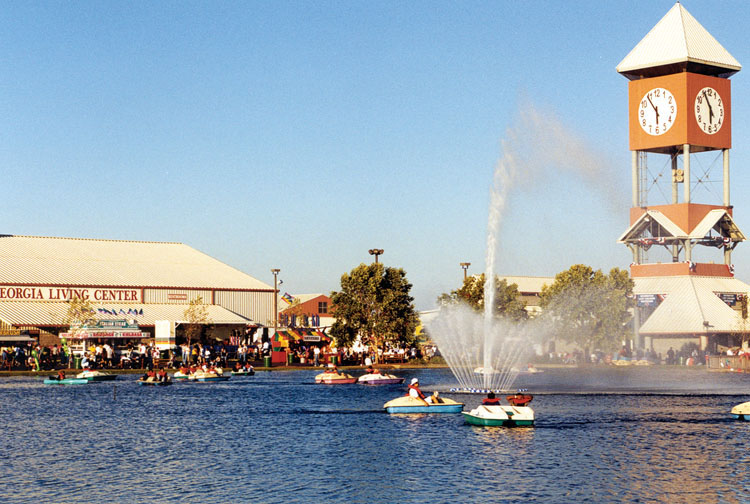
There were about fifty permanent residents living in the area when Wellston’s transformation began. By the time the devastating tornado of 1953 struck, the population had grown to more than 8,000. The physical damage done by the tornado only strengthened the spirit of the town, which continued to grow along with the importance of the base. In the twenty-first century Robins Air Force Base fuels the economy of much of middle Georgia.
Houston County was further transformed in the early 1960s by Interstate 75, which runs north-south through the county, touching the city of Perry. In recent years citizens of the county have played a variety of parts on the state and national scene, most notably Sam Nunn, of Perry, who served as U.S. senator from 1972 to 1996 and chaired the Senate Armed Services Committee. Other well-known natives of the county include architect Charles Choate and Nathan Toomer, the father of writer Jean Toomer.
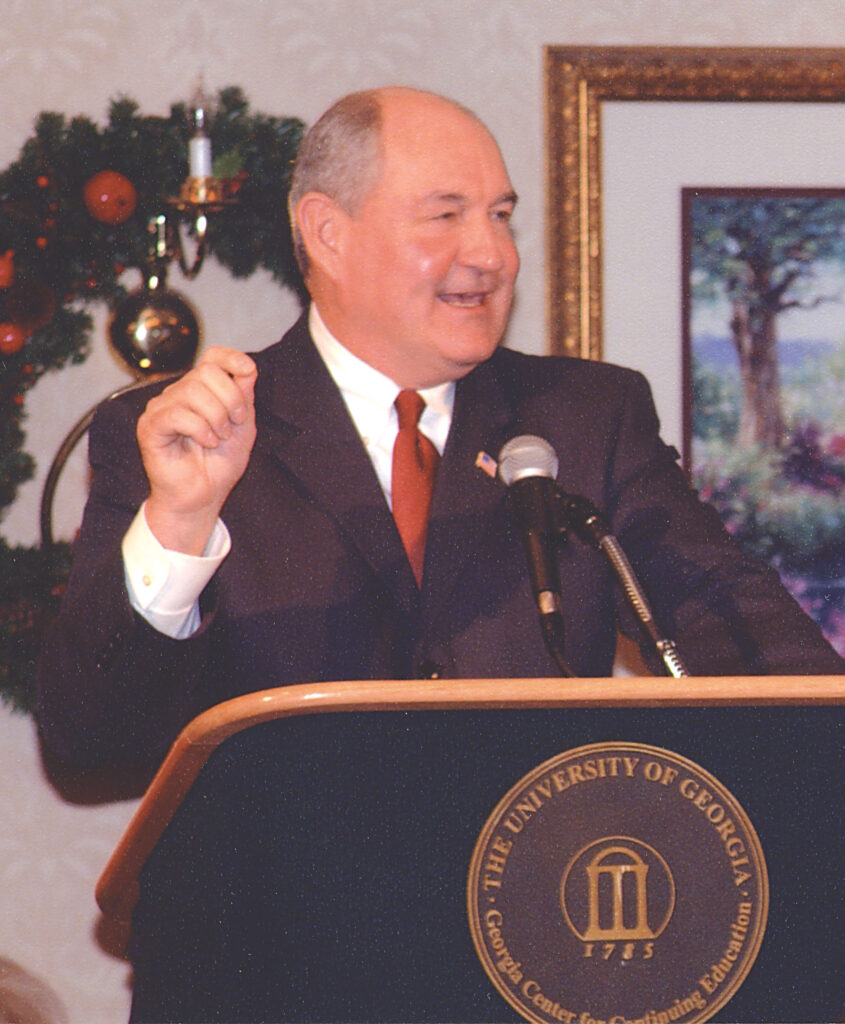
Educational opportunities in the county were expanded in 1974, when the first classes were held at the Houston Vocational Center (later Central Georgia Technical College). In 2002 Sonny Perdue, a native of Bonaire and graduate of Warner Robins High School, was elected the first Republican governor of Georgia since 1872. He later served as U.S. Secretary of Agriculture and was named chancellor of the University System of Georgia in 2022.
According to the 2020 U.S. census, the population of Houston County is 163,633, an increase from the 2010 population of 139,900.





